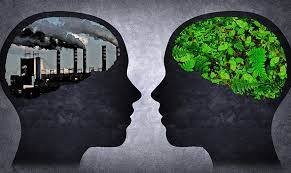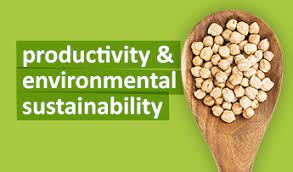
Disclaimer: Copyright infringement not intended.
Context
- A resolution passed by two villages in Maharashtra’s Kolhapur district banning age-old regressive rituals that ostracise widows is set to become part of the State’s policy for women.
- This is an example of Moral Attitude and Behavior. Moral attitudes are grounded in moral beliefs of “Right” and “wrong” action.
- The main difference between attitude and behavior is that behavior is the reflection of one’s attitude towards something or someone.
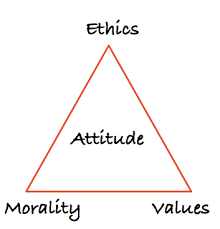
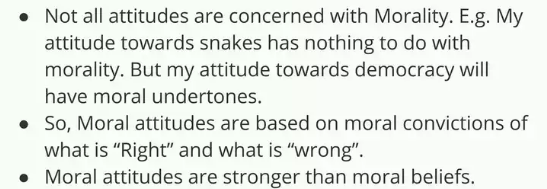
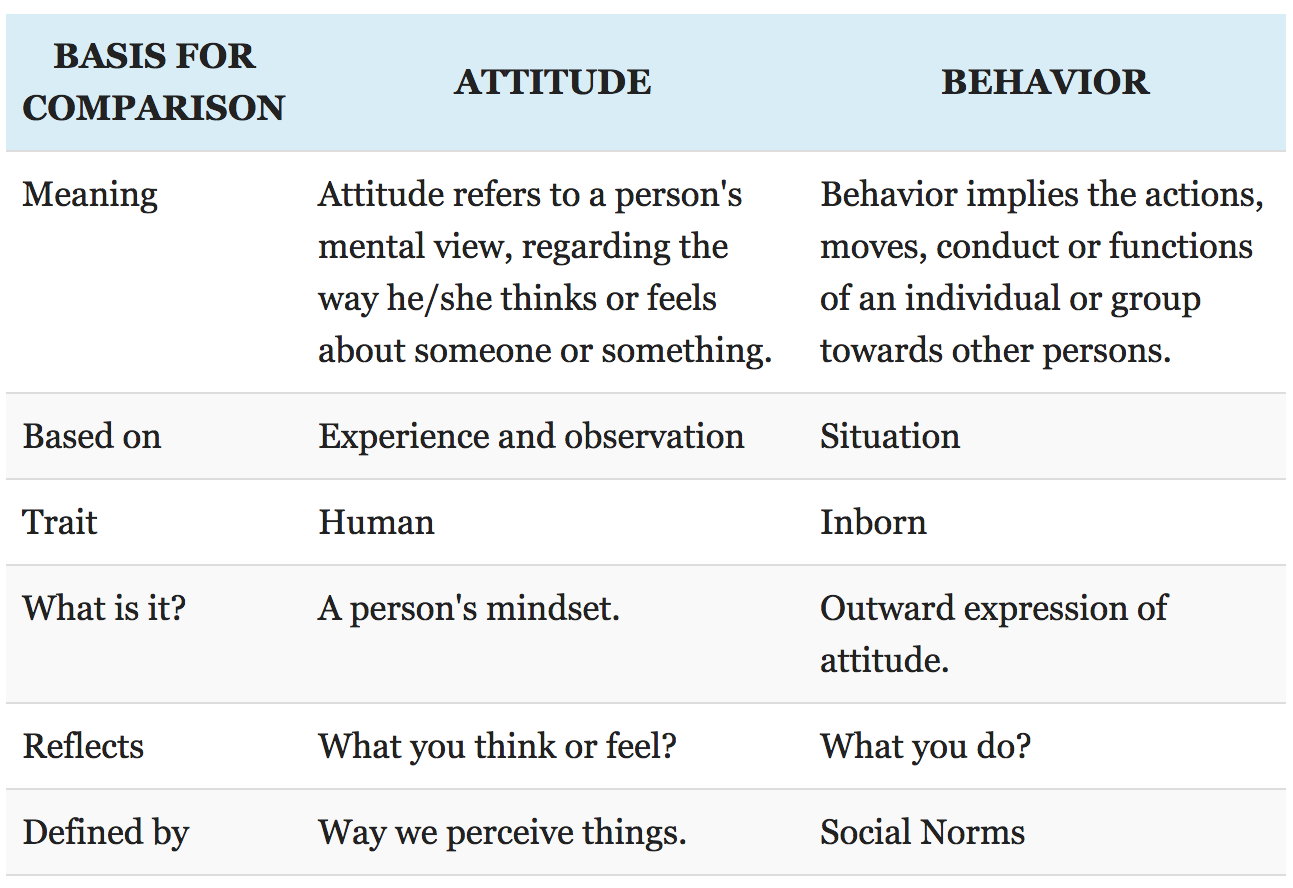
ATTITUDE
- Expression and psychological tendency of some degree of favor or disfavor toward a person, place, thing, or event.
- Ranging fromextremely negative to extremely positive.
What Is the Difference Between Prejudice, Stereotyping, and Discrimination?
- Prejudice (attitudes), stereotypes (beliefs), and discrimination (actions)
- Discriminationis behavior based on stereotypes and prejudices.
- If a person has negative beliefs and attitudes about a perceived group, he or she might act on those beliefs and attitudes in situations such as hiring a new employee
- Laws cannot influencepeople’s attitudes and beliefs very much
Measurement of Attitude
- Hypothetical construct that cannot be observed directly
- Examined through direct and indirect measures.
- Self-reports or easily observed behaviors (e.g., good-bad, favorable-unfavorable, support-oppose, etc.)
- Involuntarily formedand are typically unknown to us.
- Strong attitudes are stableand not easily changed due to persuasion
Attitude has three components ABC Model: Affective, Behavioral and Cognitive
Affective component
- Feelings or emotions linked to an attitude object
- Usually come from a person’s moral belief or value systems
Behavioral component
- The way one tends to act or behave when exposed to an attitude object
- Past behaviors or experiences regarding an attitude object
Cognitive component
- Beliefs, thoughts, and attributes that would associate with an object
- Cognitive – Our thoughts, beliefs, and ideas about something. ex-what u think about snake
- Affective – Feelings or emotions that something evokes. e.g. fear, sympathy, hate. ex-what u fell when u see snake
- Behavioral – Tendency to act, not the actual acting; what we intend and what we do may be quite different, ex- last time our reaction when we saw snake
Formation of Attitude
- Result of experience and learning, May be direct personal experience or from observation.
- Social roles and social norms

Attitudes can be learned in a variety of ways
Classical Conditioning
- Learning a new behavior via the process of association.
- Forming an attitude when a neutral stimulus is paired with a stimulus that naturally evokes an emotional response
- Ex - You are driving down a dark and curvy road when you narrowly miss a collision with a large truck that has edged over into your lane. You experience a rapid pulse, sweating palms, and your stomach begins to churn. A few days later, as you approach the same curve, you begin to experience the same reactions
Instrumental Learning
- Learning that occurs through reinforcements and punishmentsfor behavior
- Imagine a young man who has just started smoking. Whenever he lights up a cigarette, people complain, chastise him and ask him to leave. This negative feedback eventually develop an unfavorable opinion of smoking and he decides to give up the habit.
Observational learning
- Learn by observing the people around
- Ex - children spend a great deal of time observing the attitudes of their parents and usually begin to demonstrate similar outlooks
Formation of attitude
- Past experience
- Media
- Prejudice
- Friends, Family, Relatives
- Religion, Culture
- Teachers, Coaches
Functions of Attitude
- Attitudes serve four major functions for the individual
- Adjustments / utilitarian / adaptive function
- Ego defensive function
- Value expressive function
- Knowledge function
- Any particular attitude may satisfy one or more of these functions
Adjustment Function
- Directs people toward pleasurable or rewardingobjects and away from unpleasant, undesirable
- Serves the utilitarian concept of maximizing reward and minimizing punishment
- We are more likely to change our attitudes if doing so allows us to fulfill our goals or avoid undesirable consequences
Ego Defensive Function
- To Protect self-respect or justify actions that make us feel guilty.
- Ego defensive attitudes are formed to protect a person’s self image
Value expression function
- Some attitudes are important to a person because they express values that are integral to self concept
Knowledge function
- Some attitudes are useful because they help to make the world more understandable
- Attitudes toward acquiring knowledge
- Stereotypes are mental structures that allow us to predict the characteristics a person based on the group they belong to, ex - saying that all Blacks are good at sports is a stereotype
Attitude changes when it no longer serves its function and the individual feels blocked or frustrated,
Ex - As your social status increases, your attitudes toward your old car may change – you need something that better reflects your new status.
your attitudes toward your old friends may change as well
Difference between Attitude and Behavior
- Closely related but they are two different concepts.
- Attitude is internalwhereas behavior is external.
- Attitude is what you thinkwhereas behavior is what you do.
- Attitudehas to do with the mind whereas behavior has a lot to do with actions
- Attitude can shape the behaviorof a person. A person with the right attitude may be with right behavior too
- Possible to judge one’s attitude through one’s behaviorthough attitude is not visible externally
- EX - One can say that someone has a good attitude towards poor. It is evident from the person’s behavior
- Studies suggest that attitudes do not influence behavior, but sometimes attitudes do predict behavior.
When do attitudes guide behaviour?
- Attitude–behavior relation can be studied through qualities of the behavior, person, situation in which the behavior is exhibited, and qualities of the attitude
Qualities of the Behavior
- Specific behavior is best predicted by a question that in which contextthe action is performed, and the time of the action
Qualities of the Person
- Some kinds of people typically display greater attitude–behavior consistency than others.
- Two classes of individuals : those who are aware of and guided by their internal feelings. and those who tend to rely heavily on the situation to decide how to behave.
- People who are aware of their feelings display greater attitude–behavior consistency than do people who rely on situation
- Level of moral reasoning
- Self-monitoring
Qualities of the Situation
Effect of Norms
- People often behave as they believe others expect them to behave
- Norm may be so strong and so universally held that virtually everyone in that situation behaves the same regardless of his or her attitude
- Ex - Death ceremony
Time Pressure
- Time pressure pushes people away from a careful examination of the available information and toward a reliance on their preexisting attitudes
Qualities of the Attitude
- Some kinds of attitudes appear to be stronger than others.
- Direct behavioral experience v/s indirect experience with the attitude object
Moral Attitudes
- Standards of good and evil, which govern an individual’s behavior and choices.
- Moral values are always personal values.
How Moral Values Are Derived?
- May derive from society and government, religion, or self
- When moral values derive from society and government they may change as the laws and morals of the society change.
Political Attitudes
- Tells us which party someone vote for, what kind of political ideology someone prefer most, which social, economic, cultural, international policy someone prefer etc.
- Terms radical, liberal, moderate, conservative, and reactionary are among the words most often used in political discourse
- Radicals are people who find themselves extremely discontented with the status quo.Consequently, they wish an immediate and profound change in the existing order, advocating something new and different for society
- Considerably less dissatisfied, but still wishing to change the system significantly, are the liberals. All liberals share a belief in the equality, intelligence, and ability of people
- Moderates find little wrong with the existing society, and their hesitation to change it is exceeded only by the conservatives
- People on the right people admire authority, tradition, elitism, and property rights,whereas those on the left emphasize political liberty, social change, human equality, and human rights.
- Several other motivations that cause people to lean to the left or right
- Psychological factorsabout the need for change are important
- Economic circumstances, Age
- People’s views can modify over time, changing with location
- A given policy could be conservative in one society, liberal in another, and radical in a third
Political Attitude and Changing the System
- People at each point on the political spectrum have an attitude about changing the existing political system (the status quo) by adopting certain policies or by pursuing certain courses of action.
- Progressive change simply means a change from the status quo to something new and different in that society
- Retrogressive change refers to a return to a policy or institution that has been used by that society in the past
- More upset people are with the status quo, the more impatient they are likely to be, and,, the more rapidly they would like to see the existing order transformed
- Political change can take place in a multitude of ways: officially or unofficially; legally, illegally, peacefully or violently
What Factors Shape Political Attitudes?
Economic pressures
- Primary motivation for choosing a particular political position
- People who are doing well in society usually do not want it to change
- Poor have little to lose materially and much to gain from progressive change
Age
- Usually, the young are more likely to be liberal than the elderly
- Older generations have a interest in the status quo
Psychological factor
- Some people are also more psychologically suited for liberalism or conservatism than others
- To be a liberal, one must have a relatively high tolerance for disorder.
Nature of People
- If one believes that people are essentially bad, selfish, and aggressive, then one is likely to lean to the right
Family
- Children tend to grow up and have the political attitude same as their parents do
- As people grow older, other influences crisscross, and naturally their attitudes tend to diverge from those of their parents
Gender
- Generally women has political attitude influence by their husbands or other family members but in many cases we see that they have a different political views
- Generally women tends to be liberal as they want equal rights, equal pay, more opportunities etc. But their political views also depend on religion, family, class etc.
Religion
- Religious tends to support more conservative
- Associated with social issues such as gay rights, cow protection, etc than with economic issues or foreign affairs
Region
- As a general rule, people of south tend to vote regional parties more than north India. However, there are many exceptions to this tendency.
- People of north India tends to have more conservative views on several social, religious and economic issue

Political Ideologies
- Political Ideology is a certain ethical set of ideals, principles, doctrines, myths or symbols of a social movement, institution, class, that explains how society should work, and offers some political and cultural blueprint for a certain social order.
- Some parties follow a certain ideology very closely, while others may take broad inspiration from a group of related ideologies without specifically embracing any one of them
- Political ideologies are concerned with many different aspects of a society, some of which are: the economy, education, health care, labor law, criminal law, the justice system, the provision of social security and social welfare, trade, the environment, minors, immigration, race, use of the military, patriotism and established religion
- Political ideologies have two dimensions:
- Goals: How society should work (or be arranged).
- Methods: The most appropriate ways to achieve the ideal arrangement.
Social Influence
- When one’s emotions, opinions, or behaviors are affected by others
- Can be seen in socialization, peer pressure, obedience, leadership, persuasion, sales and marketing
Three broad varieties of social influence
- Complianceis when people appear to agree with others, but actually keep their differ opinions private.
- Identificationis when people are influenced by someone who is liked and respected, such as a famous celebrity
- Internalizationis when people accept a belief or behavior and agree both publicly and privately
Conformity
- Type of social influence involving a change in behavior, belief or thinking to align with those of others
- Act of matching attitudes, beliefs, and behaviors to group norms. Norms are implicit, unsaid rules, shared by a group of individuals, that guide their interactions with others.
- Can occur in the presence of others, or when an individual is alone. For example, people tend to follow social norms when eating or watching television, even when alone
- In the case of peer pressure, a person is convinced to do something which they might not want to do, but they perceive as “necessary” to keep a positive relationship with other people, such as their friends.
- Culture appears to play a role in willingness to conform to a group.
- Women are more persuadable and more conforming than men, may be due to different sex roles in society. Women are generally taught to be more agreeable whereas men are taught to be more independent
- Conformity pressures generally increase as the size of the majority increases
What is Groupthink?
- Group members try to minimize conflict and reach a consensus decision without critical evaluation of alternative viewpoints, by actively suppressing different viewpoints, and by isolating themselves from outside influences
- Loyalty to the group requires individuals to avoid raising controversial issues or alternative solutions, and there is loss of individual creativity, uniqueness and independent thinking.
Factors affecting the strength of social influence
- Strength: Importance of the influencing group to the individual.
- Number: Number of people in the group
- Consolidation– as individuals interact with each other, over time, their actions, attitudes, and opinions become uniform.
- Liking: People are more easily swayed by people they like.
- Authority: People will tend to obey authority figures
- Pressure to maintain one’s reputation and not be viewed as diffrent may increase the tendency to agree with the group, known as groupthink.
- Culture, religion appears to play a role in willingness
Persuasion
- Attempt to influence a person’s beliefs, attitudes, intentions, motivations, or behaviors.
- Process aimed at changing a person’s (or a group’s) attitude or behavior toward some event, idea, object, or other person
- Attitudes or beliefs are changed by appeals to logic and reason. or because of habit or emotion
Theories of Persuasion
Attribution theory
- Attribution is the process by which individuals explain the causes of behavior and events, Attribution theory is the study of models to explain those processes
- Humans attempt to explain the actions of others through either dispositional attribution or situational attribution
- Dispositional attribution, referred to as internal attribution, attempts to point to a person’s abilities, motives, as a cause or explanation for their actions.
- Situational attribution, referred to as external attribution, attempts to point to the context around the person and factors of his surroundings, particularly things that are completely out of his control.
- In general, people tend to make dispositional attributions more often than situational attributions when trying to explain or understand a person’s behavior.
Classical conditioning
- Leading someone into taking certain actions of their own, rather than giving direct commands, ex - advertisements
- By repeating the message several timesit will cause the consumer to be more likely to purchase the product because he/she already connects it with a good emotion and a positive experience.
Elaboration likelihood model
- Central route: Whereby an individual evaluates information presented to them based on the pros and cons of it and how well it supports their values
- Peripheral route: Change is mediated by how attractive the source of communication
Elements / Components of Persuasion
- Components or factors involved in communication process are source, message, channel, receiver and destination
- “Channel” designates the medium (e.g. press, radio, television) through which message is communicated
- “Receiver” factors, it refers to the persons (e.g. age, sex, etc.) to whom the communication is directed
The Source
- A source is more persuasive if he or she is seen as credible (believable) and attractive
- There are two ways for a source to be credible
- Claiming to be an expert
- Appearing to be trustworthy
- There are also two ways for a source to be attractive
- Physical appeal
- Similarity to the audience.
The Message
- Persuasive messages can involve emotional appeals or rationalarguments
- When time is limited, short emotional appeals may be more effective than rational arguments
- When audience is highly involved and already sympathetic, a one-sided message is more persuasive
- When audience is undecided or uninvolved, a two sided message seems more fair and persuasive
- Intelligent audiences are persuaded better by two-sided messages, probably because they more easily recognize that there are two sides to the issue.
The Context
- When we listen to or read a persuasive message, we are usually free to limit our attention or silently counter argue with its arguments
- when subjects are distracted, they are more likely to accept a persuasive message
The Audience
- Intelligent recipients are more persuaded by complex messages, while unintelligent recipients are more persuaded by simple emotional messages.
- characteristics like age or lifestyle as relevant to persuasiveness. For example, young people may be more likely to accept a message that promised popularity, while older people would find security or health a more appealing promise
Principles of Influence
- We feel obliged to give back to people who have given to us
- We copy what others do, especially when we are unsure. People will be more open to things they see others doing
- Obligations of friendship
- Low-balling is a persuasion technique that deliberately offers a product at a lower price than one intends to charge (but charge high then normal)
- Foot-in-the-door technique works by first getting a small yes and then getting an even bigger yes
- Challenging Beliefs
- Developing Counterarguments
https://epaper.thehindu.com/Home/ShareArticle?OrgId=GIO9QG0NT.1&imageview=0












